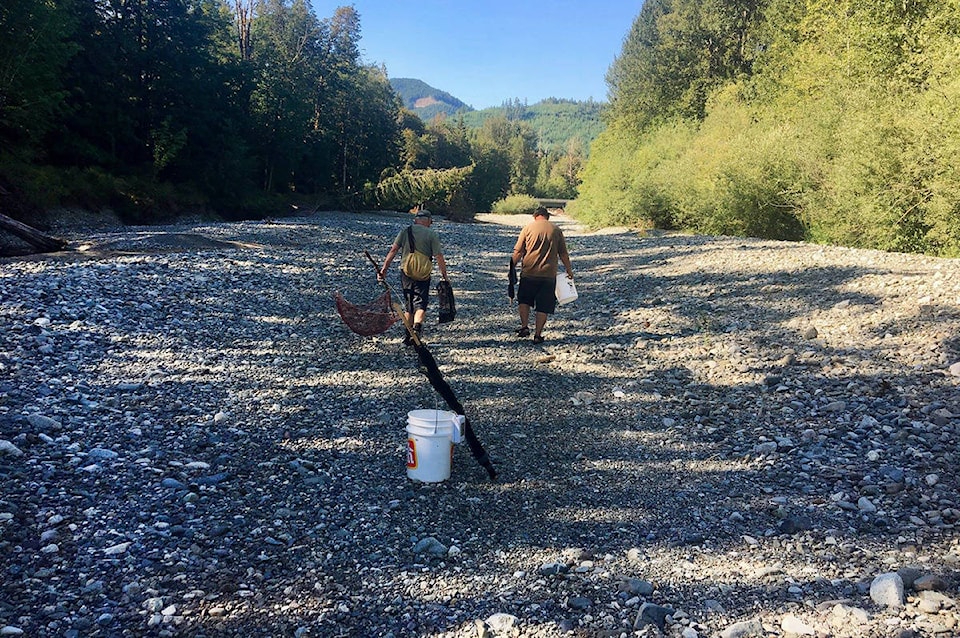The Cowichan Stewardship Roundtable has reported that Cowichan Lake is only about 40 per cent full of water, a low level not usually seen until August.
In a report made public March 4, they called it “disturbing news”.
“The Cowichan River is running at 20 CMS (cubic metres per second), well below expectations for this time of year and the Heather Mountain snow pillow is showing a low snow pack.
“There is little precipitation in the long-term forecast and we are going to need a very wet spring to avoid very low flows this summer and fall. The graphs look bad but there is still time to accumulate snow in the mountains.
“The stalled high pressure system we have been under for the past several weeks is typical of what we can expect going forward and is a manifestation of climate change. A rapidly warming arctic has slowed the jet stream which results in stubbornly persistent weather patterns.
“We are sitting under a high pressure system more typically seen here in the summer. Winter droughts can have very serious consequences later in the summer. This is setting up to be one of the worst summers yet in the Cowichan.
Catalyst is asking the province for permission to start storing water behind the weir before the mandated date of April 1, possibly as early as March 11, the report continued.
During the past few summers, there has been desperate concern about the level of water in the Cowichan River during the last hot few weeks of summer.
Ian Morrison, chair of the CVRD board of directors, said March 4 that there are many groups involved in keeping an eye on Cowichan Lake and the Cowichan River. The stewardship group is only one of them, he said, adding that he attends their meetings but is not a member of the Roundtable himself.
Asked if this is a problem to be wringing our hands about right now, he said, “It’s concerning, certainly. All the concerned groups and organizations and ministries and everybody are talking about a response to it. But, we have had similar circumstances in the past where the rain and the snow actually did come in late March and April.”
Cowichan Lake really has two seasons, he said, “the wet season and the dry season. For the most part, the wet season’s been drier than normal. I guess where I’m concerned is the numbers from the snow pillow on Heather Mountain are causing concern because precipitation in the form on snow on the hills is water in the bank.
“I’ve been asked if I wanted to see more precipitation. I said I want to see tons more precipitation but what I want to see is it in the form of snow in the hills above Lake Cowichan. It has that lasting effect of providing inflows into the lake right through up to June and sometimes even July.
“I go for a walk early every morning and it’s a really peculiar thing that it’s -6 or -8 and there are still six or eight or 10 inches of snow on the ground but the roads are bone dry. It’s supposed to be the rainy season right now and it’s not particularly rainy.
This isn’t a new phenomenon to not have the snow pack combined with low lake levels, Morrison said. And it’s not yet irreparable.
“It could fill up in a matter of days if we got one of those Pineapple Express systems to come up and stall over the Island,” he said. “But then that will have the detrimental effect: we’re going to lose that water in the bank up on the mountains.”
Catalyst’s Graham Kissack agreed with Morrison that it’s still early days yet.
“We have a lot of people who live around the lake who have noticed that the level is getting low. It’s been the coldest February on record, and although there was snow on the ground it was actually quite dry from a precipitation perspective.
He said Catalyst is trying to be proactive with their request to the province.
They’re not looking to reduce river flow at this point, so there would be no impact on fish.
“We still have to hold the river at 25 CMS and we would be doing that. But, any additional water above that level, we would like to hold back and help the lake recover in terms of its level,” Kissack assured.
“I think the other thing to recognize is that we’re still early in the season. Forecasters are looking at a wet week [in mid March] that will help charge the lake. Also, we can build snow pack in the mountains until the end of April. We still really do have six or seven weeks left to see the lake level rebound.
“It’s been a highly unusual winter but it’s still early in the season. We don’t need to light our hair on fire yet,” Kissack concluded.
